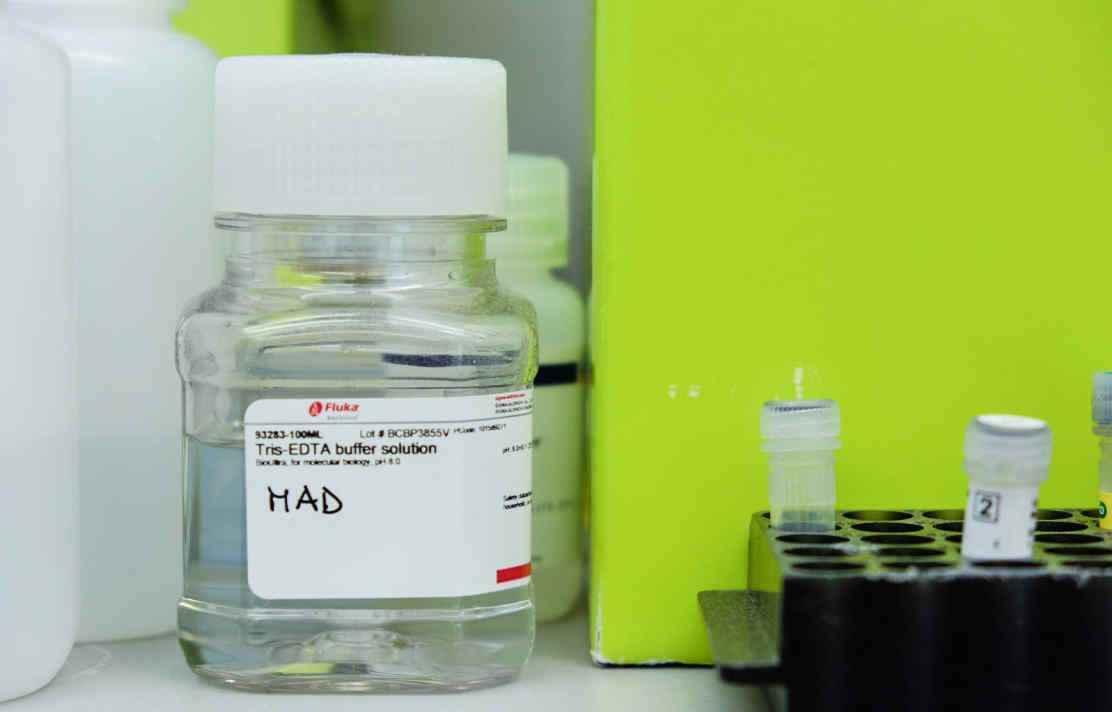
Quantification of Buprenorphine in post-mortem blood by 2D GC-MS
- Buprenorphine is a semi-synthetic opioid.
- It is used in the treatment of chronic pain and opioid dependency.
- There has been a substantial rise in illicitly available buprenorphine.
- Even therapeutic concentrations can be fatal.
- A method was developed and validated to quantify buprenorphine using two-dimensional Gas Chromatography-Mass Spectrometry.
- Post-mortem blood concentrations from 14 cases ranged from 1.8 - 43.0 ng/mL.
- Presented at The International Association of Forensic Toxicologists (TIAFT) meeting in Florence (2015).
- Quantification of buprenorphine in post-mortem blood by 2D GC-MS (pdf)
Etizolam in post-mortem cases
- Etizolam is a benzodiazepine analogue.
- Widely available in Japan, India for treatment of anxiety or insomnia.
- Reportedly being abused in the UK for its euphoric effects or to 'comedown' after taking stimulant dugs.
- A review of four post-mortem cases in which etizolam was detected.
- Post-mortem blood concentrations ranged from 0.07 - 0.52 μg/mL.
- Presented at the United Kingdom and Ireland Association of Forensic Toxicologists (UKIAFT) meeting in Leicester (2014).
- Etizolam in post-mortem cases (pdf)
Investigation of markers to indicate and distinguish death due to Alcoholic Ketoacidosis (AKA), Diabetic Ketoacidosis (DKA) and Hyperosmolar Hyperglycemic State (HHS)
- A study reviewing toxicology results from 191 post-mortem cases.
- Beta-hydroxybutyrate (βHB) is the preferred marker of ketoacidosis.
- A βHB concentration >250 μg/mL indicates pathologically significant ketoacidosis prior to death
- βHB only needs to be measured if acetone is detected >2 mg/dL.
- Vitreous humour glucose should be routinely measured to distinguish DKA from ketoacidosis of other causes and to identify HHS.
- Investigation of markers to indicate and distinguish AKA, DKA and HHS (pdf)
Production of identical retention time and mass spectrum for Δ9-THC and CBD following derivatisation with trifluoroacetic anhydride (TFAA)
- The use of TFAA for derivatisation of cannabinoids has been well documented.
- When THC and CBD were derivatised with TFAA, the resultant derivatives produced the same retention time and mass spectrum, even though THC has one site available for derivatisation and CBD has two.
- This poster highlights the unsuitability of derivatisation with TFAA when analysis of either THC only or THC and CBD is required.
- Presented at The International Association of Forensic Toxicologists (TIAFT) meeting in Buenos Aires (2014).
- Production of identical retention time and mass spectrum for THC and CBD (pdf)
2008: A review of hair analysis in post-mortem cases
- Cocaine was by far the most frequently seen drug, detected in 63% of hair samples analysed.
- Cocaine use is widespread and deaths associated with its use may go undetected.
- Cocaine causes very few acute deaths, but chronic use may cause fatal cardiac disease and may be linked to depression leading to suicide.
- Hair analysis is needed to demonstrate chronic cocaine use.
- A review of hair analysis in post-mortem cases (pdf)
Hair - A valuable resource in post-mortem toxicology
- Winner of the John Jackson Award 2007 in recognition of a poster of outstanding scientific merit.
- Analysis of hair provides a retrospective record of an individual's drug history prior to death.
- This can provide important information to the pathologist, coroner and family of the deceased in understanding both the cause and circumstances surrounding the death.
- Hair – A valuable resource in post-mortem toxicology (pdf)

Important links
General enquiries
Toxicology Unit
Imperial College London
Charing Cross Hospital Campus
St. Dunstan’s Road
London W6 8RP
+44 (0)20 3311 7108
s.paterson@imperial.ac.uk